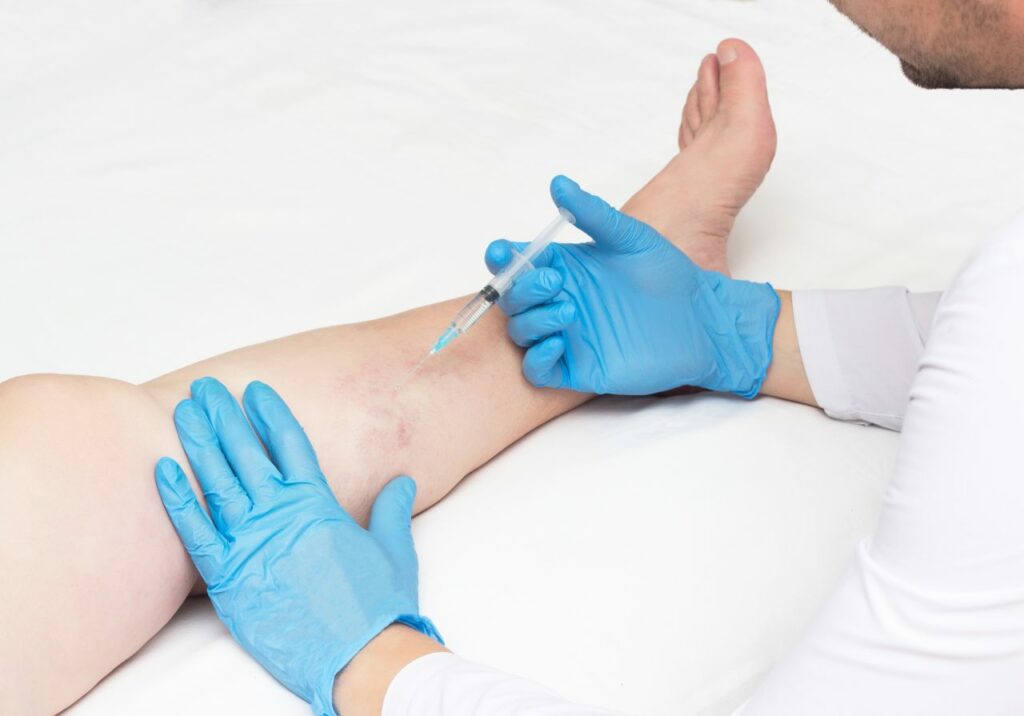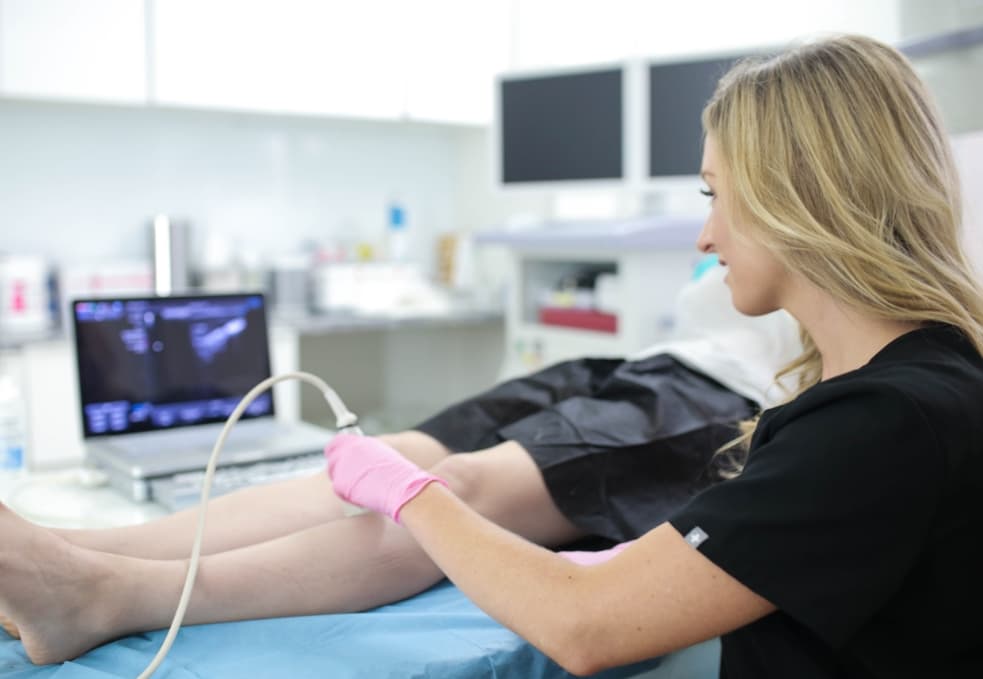Step 1: Determine if your leg swelling is accompanied by other signs of vein disease
Leg swelling is a condition that leads to excessive fluid accumulation and leg swelling. The symptoms of leg swelling usually worsen at night, while lying in bed, or when you sit or stand still for long periods. While the specific cause of leg swelling is hard to determine, it can be attributed to numerous factors, including kidney failure, diabetes, heart failure, obesity, pulmonary hypertension, pregnancy, deep vein thrombosis, and more.
Chronic venous insufficiency is one of the primary root causes of leg swelling. Venous insufficiency is a medical condition caused by the collapse of vein valves, the components of your body usually responsible for ensuring smooth blood circulation to the heart. When the vein valves collapse or malfunction, blood flows backward and accumulates in the leg veins. The continued accumulation of blood in leg veins leads to vascular dilation and the eventual formation of spider veins and varicose veins.
If leg swelling is caused by chronic venous insufficiency, your symptoms may worsen at night or after long periods of sitting or standing still. You may also notice some of the other symptoms of vein disease, such as restless leg syndrome, leg heaviness, throbbing leg veins, frequent leg cramps, spider veins, and varicose veins. If you notice the signs and symptoms of vein disease, you must contact a reliable, board-certified vein doctor to explore your treatment options for restless leg syndrome.

Step 2: Contact a reliable vein doctor specializing in minimally invasive vein treatments
Long Island Vein Treatment is a group of state-of-the-art medical centers specializing in minimally invasive vein treatments. Our medical centers are led by board-certified and Harvard-trained vein doctors with specialized training in the latest and safest minimally invasive spider vein and varicose vein treatments. Our vein doctors perform thorough evaluations and tests to diagnose the root cause of leg swelling, following which they curate a personalized, minimally invasive vein treatment plan.
You can find our vein doctors in our state-of-the-art medical centers for vein treatment in Jericho, West Islip, and Hampton Bays. Our office in West Islip is at 500 Montauk Highway, the Jericho office is located at 350 Jericho Turnpike Suite 1A, and the Hampton Bays office is at 225 W Montauk Highway, Suite #3. We encourage you to visit your nearest medical center for vein treatment in Long Island — we follow the same standards of vein care in all of our offices. Please schedule an appointment with your nearest vein doctor today.
Step 3: Your vein doctor will administer ultrasound tests to diagnose the root cause of leg swelling
When you contact a vein doctor, your initial consultation will include a thorough evaluation. Your vein doctor will examine your legs and veins, ask about your symptoms, and determine if you have any of the symptoms of vein disease — beyond leg swelling. After a thorough evaluation, the vein doctor will administer an ultrasound imaging test, known as duplex ultrasound. During a duplex ultrasound, the ultrasound sonographer will move a handheld device over your legs to deliver sonic waves that reveal the direction of blood flow in your legs.
The vascular imaging test allows the vein doctor to confirm the presence of underlying chronic venous insufficiency. The vein doctor will study the direction of blood flow in your leg veins, determine if you have accumulated blood in your veins, and curate a personalized vein treatment plan. If you have underlying vein disease, your vein treatment plan may start with radiofrequency ablation, endovenous laser ablation, or venaseal — these are minimally invasive procedures that target the root cause of leg swelling.
Step 4: Undergo vein treatment to address the root cause of leg swelling and heaviness
Radiofrequency ablation and endovenous laser ablation are the ideal minimally invasive treatments for vein problems. The vein doctor makes a small incision on the skin’s surface and inserts a catheter that generates thermal or laser energy to heat and destroy the diseased saphenous vein. The diseased vein gets reabsorbed by the body, and the accumulated blood gradually reroutes into healthier leg veins.
VenaSeal is another effective alternative to radiofrequency ablation. During this procedure, the vein doctor makes a small incision on the skin’s surface to insert a catheter that delivers medical adhesives into the diseased vein. The FDA-approved vein glue seals the diseased vein’s walls, turning it into a hardened tissue eventually reabsorbed by the body. This procedure also restores optimal blood circulation to the leg veins, which reduces swelling.
Step 5: Wear compression stockings and resume your daily activities and work
Minimally invasive vein treatments usually conclude within an hour, following which you may resume your daily activities immediately. There is no downtime. You may experience some leg swelling after the treatment, but the side effects gradually dissipate over several days. You must wear compression stockings to reduce swelling after the treatment. Compression stockings are skin-tight garments that apply pressure on your leg veins to push some of the accumulated blood towards the heart and improve blood circulation.
In addition to wearing compression stockings, you can take a few additional measures to reduce swelling. You can elevate your legs above your heart’s level while sitting, avoid sitting or standing for long periods and walk frequently. These activities and changes will improve blood circulation and prevent blood from accumulating in the leg veins, which, in turn, will reduce swelling. You should notice the results of your treatment after a few days.
